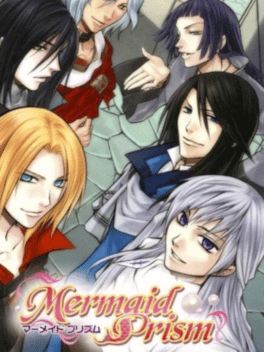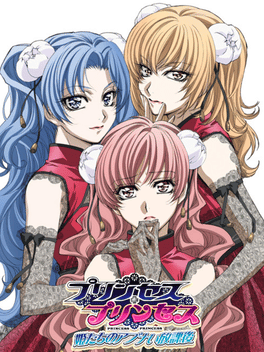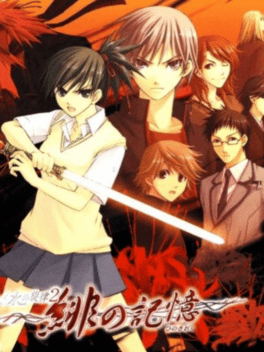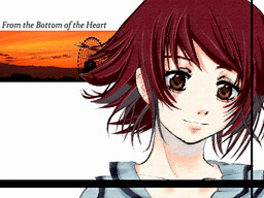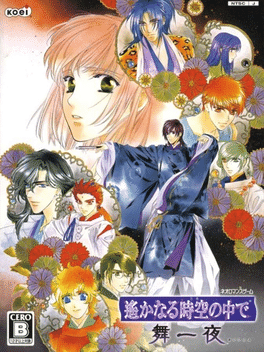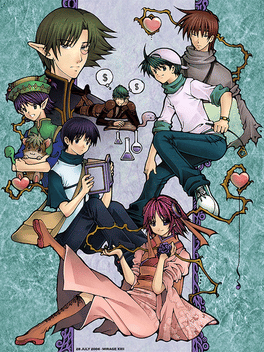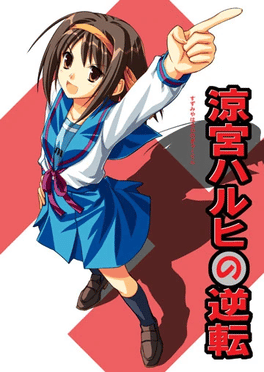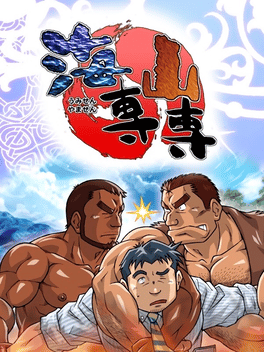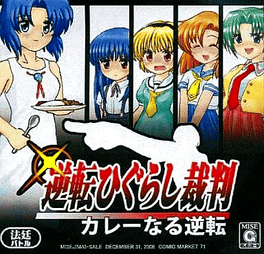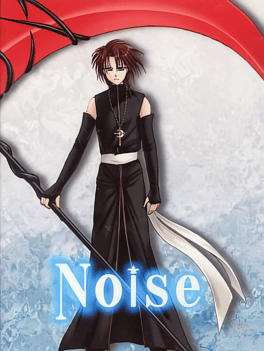New Android Games - Page 194
-
Really? Really!
2006
Really? Really!
2006
Really? Really! is the third eroge visual novel in the Shuffle! series created by Navel for Microsoft Windows. It is a continuation of Kaede's path from the first Shuffle! visual novel, and has a linear plot. In Really? Really!, Kaede has lost her memories and throughout the game the player must fix them. Using keywords acquired from viewing various events in Kaede's memories, the player must fix mistakes in Kaede's past memories. -
Tasty Shafts
2006
Tasty Shafts
2006
"Will you go out with me?" Mitsuna was asked to go out by the twins, Kyouichi and Reiji, at the same time! It was too difficult of a choice for indecisive Mitsuna to make. "I can't choose between Kyouichi and Reiji......" "Well, then will you go out with both of us?" The trio then started a new life which they enjoy doing everything together including sex! -
Days of Memories: Kare to Watashi no Atsui Natsu
2006
An otome game featuring the guys from King of Fighters. -
Lamento: Beyond the Void
2006
The game takes place in a fictional world inhabited by Ribika (who look like humans but have cat ears and tails). Their world has fallen into dark times -- a mysterious void has made some places (and even animals) impossible to touch, causing major food shortages. A strange and deadly disease that has killed off a large percentage of the female Ribika population is also spreading. The hero, Konoe, exists in this miserable world, living alone in the starving village of Karou who have turned to cannibalism. The story begins with Konoe in Karou, where he suddenly begins to see horrible dreams and strange marks appear on his body. This is believed to be a curse so Konoe heads off to Ransen (the big city) in order to heal his body... -
Kanon
2006
-
Mermaid Prism
2006
Mermaid Prism
2006
Mermaid Prism is an Adventure game, developed by Vingt-et-un Systems and published by D3Publisher, which was released in Japan in 2006. -
Princess Princess: Himetachi no Abunai Houkago
2006
A visual novel based on the anime/manga series Princess Princess. Released on October 26, 2006 for the PlayStation 2 in Japan. -
Negaeba Kitto...
2006
Negaeba Kitto...
2006
Negaeba Kitto tells the story of a young man who has recently been treated for a serious illness, and who finds a certain kind of redemption in the most unlikely place. -
Princess Maker 4 Portable
2006
Princess Maker 4 Portable is a port of Princess Maker 4 for PlayStation Portable. -
Harukanaru Toki no Naka de: Maihitoyo
2006
Based on the movie of the same name, this game is a re-telling of the original Harukanaru Toki no Naka De 1, where the story is based in a different setting and with a new character added. -
OA: Other Age
2006
OA: Other Age
2006
You are the Princess of Zeiva Kingdom. In order to celebrate your 16th birthday, Green Mage Nitarou gives you a special machine that allows you to summon your dream guy. Enter the world of Other Age, where Genetic Glow and Imaginary Realm characters collide. There are 10 obtainable characters to choose from, complete with various mini-games, events and endings. -
Suzumiya Haruhi no Gyakuten
2006
Suzumiya Haruhi no Gyakuten (涼宮ハルヒの逆転, The Turnabout of Haruhi Suzumiya) is a Japanese doujin game made by CUBETYPE and released in 2006. Its gameplay is based on the Ace Attorney series. -
Strawberry Panic! Girls' School in Fullbloom
2006
There are three playable characters, one from each of the schools: Nagisa, Hikari, and Kizuna. They have no family names in the game, as when the series of short stories were first published. While Ai Shimizu maintained her role for Kizuna in the game, Miyuki Sawashiro performed the voice for Tamao Suzumi. The game features a "boy mode" and a "girl mode". Choosing the male version means that the story is told via emails from the player's younger sister; choosing the female version means that the story is told in the player's own diary. The player is given the chance to pair their chosen character with one of the other nine available girls, not including the other possible playable characters. There are twenty-seven different combinations depending on which girl the player chooses at the start of the game. -
Kaze no Satsui: It's a Long Way Round
2006
Six members of the broadcasting club gather at a villa in the mountains for a farewell party for former club director Haruki who leaves for the USA. Main character Kazuya secretly has romantic feelings for the members of the club. He organizes this this farewell party with quite a few surprises. -
Umisen Yamasen
2006
Umisen Yamasen
2006
Main character hurries to leave home town after graduating from high school. One day father priest sends him a telegram and asks to come back. Town has turned into an almost extinct village over this time. Father asks protagonist to get rid of the spirit of sea and mountains that drive away all the fish and attract beasts. But the way to awaken power and drive away the spirits is to have sex with them. -
Gyakuten Higurashi Saiban: Curry Naru Gyakuten
2006
A fan game of Higurashi with Ace Attorney gameplay. -
Noise
2006
Noise
2006
Katzhe woke up in a room he can't identify. Besides, a man named Jiku watching him anxiously. "Where the hell is this? Who are you?" ....Katzhe lost his memory of the last few years since he fell from the cliff. The life with Jiiku started...







